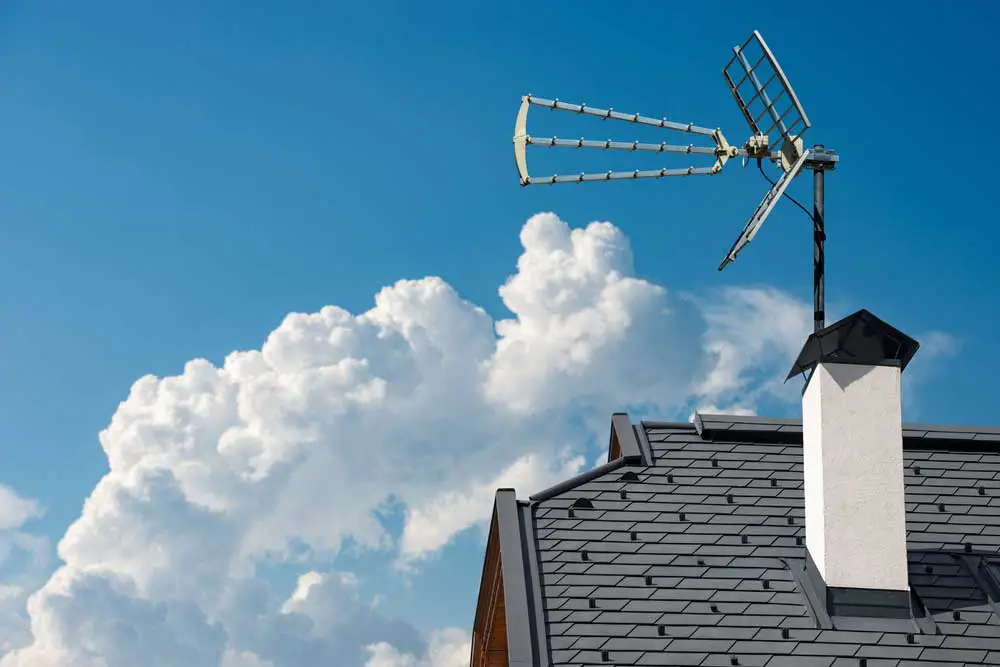A common question among television users is whether they can use old satellite dish as TV antenna.
The truth is that, yes, you can use your old satellite dish as a television antenna, but only under certain conditions.
Generally, while TV antennas are designed to capture terrestrial broadcast signals, satellite dishes capture signals sent from a satellite.
Therefore, for the dish to work as an antenna, you must repurpose it by removing the Low-Noise Block Downconverter (LNB) and replacing it with an antenna.
The modification transforms your satellite dish into a parabolic reflector that captures over-the-air signals.
Today’s article helps you understand how to convert your old satellite dish into a TV antenna while achieving optimal reception. Let’s get rolling!
Understanding A Satellite Dish and TV Antenna
A satellite dish is a parabolic-shaped antenna designed to receive signals directly from a geostationary satellite.
Generally, it consists of a curved reflector that focuses all the incoming signals to a central Low-Noise Block Downconverter (LNB).
The function of an LNB is to convert the incoming high-frequency to low-frequency signals for transmission to a set-top box or any other decoding device.
Conversely, an antenna is just an aerial (over-the-air antenna) receiving signals broadcast by local television stations.
Antennas or aerials can be indoor or outdoor and capture signals in the Ultra High Frequency (UHF) or Very High-Frequency (VHF) bands.
Connecting an antenna/aerial to your television lets you comfortably view free-to-air HD television channels from multiple TV stations.
Can You Use Your Old Satellite Dish As A TV Antenna

(An old satellite dish on the roof)
Yes! You can comfortably repurpose your old satellite and convert it into an over-the-air television antenna.
The process involves removing the LNB, which is the element in the dish that receives satellite signals.
You then connect an antenna at the position where you removed the LNB.
Afterward, you connect a coaxial cable from the antenna to your television to view your preferred TV channels.
After repurposing the satellite dish, it will function as a parabolic reflector, capturing broadcasting signals and concentrating them on the antenna.
However, such an antenna won’t work with the same efficiency as a purpose-built TV antenna.
How To Use An Old Satellite Dish As A TV Antenna

(A simple home structure with a satellite dish)
If you have an old satellite dish, repurposing it into a TV antenna can offer a cost-effective approach to accessing over-the-air signals.
Below are the critical steps to use an old dish as a television antenna.
- The first step is to remove the LNB from the satellite dish. Generally, the LNB is the element that receives signals from the satellite and is not required for a normal television antenna.
- Check the size of the dish and whether it is large enough to offer optimal signal reception. Surprisingly, a larger dish means capturing more signals from the transmitting tower.
- Next, identify the position of the feed horn (the position where the LNB was initially located). This is the point you will connect the coaxial cable that further links to your television.
- You can now prepare a coaxial cable long enough to connect your dish’s feed horn to the decoder (tuner or directly to the television). After the preparation, connect the cable from the feed horn to the television. And if you like, you can employ a coaxial cable splitter to link multiple televisions to your antenna.
- For safety purposes, ground your dish by connecting a wire to the dish’s metallic part to the ground rod. Now adjust your satellite dish to face the direction of the transmission tower. Ensure no obstructions in the signal path, including trees, buildings, or physical terrain. For your information, we have countless online tools that you can use to identify the direction of the tower.
- You can finally connect the coaxial cable to your television and scan the available channels. Check whether the channels are high-quality; you can repeat the scanning or repositioning process to achieve better results.
How Is A Satellite Dish Different from An Antenna?

(A television antenna on a home roof)
A satellite dish and an antenna serve different purposes in communications. Generally, they have the following major differences.
Purpose
A satellite dish receives signals from a geostationary satellite in space.
These could be radio, internet, or television signals which are then amplified and focused on a decoding device by the dish.
We normally use satellite dishes for satellite internet and television services in areas lacking cable or fiber.
Conversely, antennas or aerials receive terrestrial signals from local television stations.
Afterward, the signals are transmitted to the tuner for decoding (conversion into video and audio).
Signal Source

(A young man fitting a satellite dish)
All satellite signals on the dish come as radio frequency signals to support satellite internet, radio, and television.
On the other hand, antennas receive UHF and VHF from local broadcasting towers.
Subscription
You must subscribe to a satellite service provider to access satellite services on a satellite dish.
Moreover, even after subscribing to a service provider, you might still have to pay for specific channels.
However, a TV antenna allows you to access free over-the-air channels if you have a television. However, accessing additional channels might require a subscription.
FAQs
Can you connect your television to a satellite dish?
Yes! You can use a satellite dish to access satellite television services from anywhere globally.
However, you must approach a satellite service provider who will install a satellite dish at your location and give you a set-top box for connecting to your TV.
The satellite should properly align with the transmitting satellite in space for the best satellite dish signal reception.
How many televisions can you connect on one satellite dish?
The number of televisions you can link to your satellite dish depends on your set-top box or receiver capabilities.
Surprisingly, most satellite receivers have many output ports, giving you room to connect more televisions.
Generally, most satellite set-top boxes come with two or four ports, allowing you to link at most two or four televisions.
However, all the televisions you connect to the set-top box will display the same channels.
Is a satellite dish affordable?
The affordability of a satellite depends on several factors, including the type of service you subscribe to.
For example, those who opt for a basic installation service will find satellite services more affordable.
But when you compare satellite services with other options, we find them expensive, especially regarding the initial installation costs.
Some options, like the free over-the-air television services, are free.
Most people have come to appreciate how important satellite services are regardless of affordability when it comes to accessibility in remote areas where other options like fiber-optic aren’t available.
Final Remarks
If you already own an old satellite antenna, the good news is that you can use it as a TV antenna.
However, you must repurpose it by removing the LNB responsible for satellite signal reception.
But since a satellite dish-turned-TV antenna doesn’t offer high-quality performance, you will get a better viewing experience with a purpose-built television antenna.
